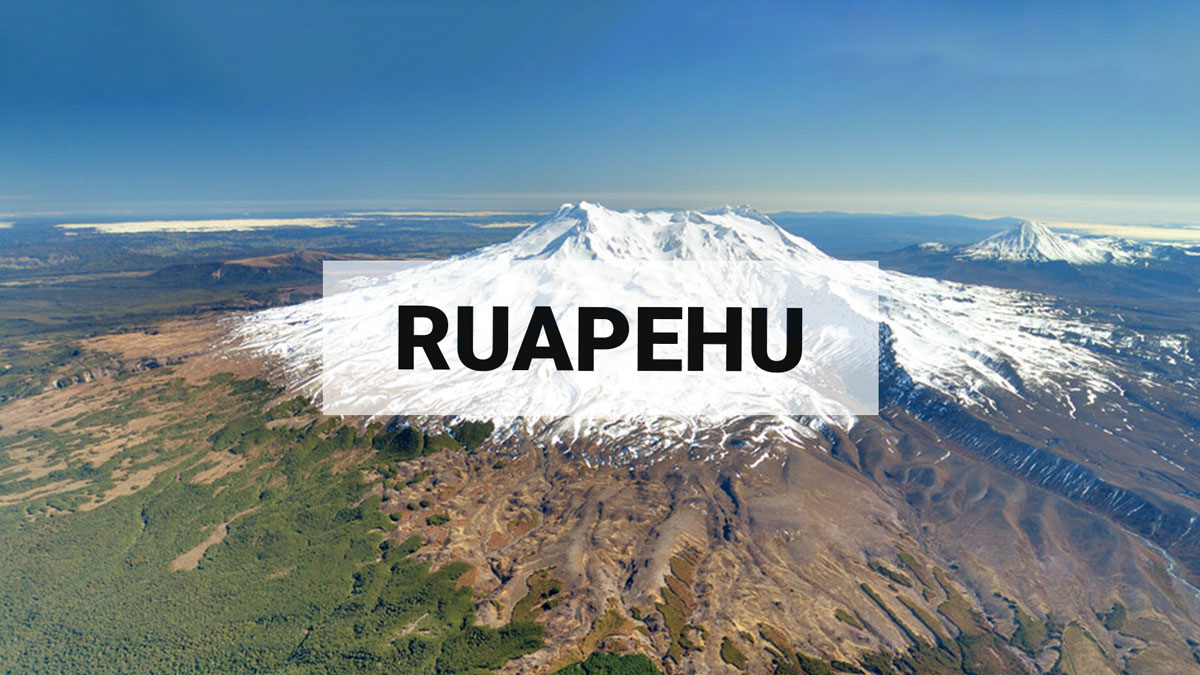
Minor volcanic unrest continues at Mt Ruapehu as lake remains cool. Volcanic Alert Level remains at 1.
Since our last activity bulletin on Ruapehu (29 August), the temperature of Te Wai ā-moe (Ruapehu Crater Lake) has remained cool, declining from 11°C to 8°C, the lowest temperature measured since 1970. Our volcanic gas monitoring continues to measure low-moderate volcanic sulphur dioxide (SO₂) emissions. An eruption remains unlikely.
The Volcanic Alert Level remains at 1 and the Aviation Colour Code at Green.
Te Wai ā-moe (Ruapehu Crater Lake) temperature remains cool (Fig.1). Currently the daily mean lake temperature is around 8ºC, a drop of 3ºC since late-August. This is the lowest measured temperature since 1970, with a temperature of 9ºC recorded in 1988. Usually, the lake temperature fluctuates in response to changes in volcanic heat input, and since mid-February there has been little heat coming in, so the temperature has been declining.
The eruptive history of Ruapehu has shown eruptions are more common when the lake is warmer than average, but also has a slightly higher than normal probability of erupting during cool periods. See our previous activity bulletin on Ruapehu for more details.
The reduced heat flow into the lake suggests some mineral sealing of the vent areas. Although the amount of sulphur dioxide (SO₂) volcanic gas passing through the lake has also declined during 2024, the fact that we are still measuring gas indicates the vent is not completely blocked. This interpretation is supported by observations we made on 30 September of upwellings in the crater lake with slicks of sulphur floating on the lake surface.
The cooling of Te Wai ā-moe, together with declining SO₂ gas flux, is consistent with cooling of the hydrothermal system beneath the lake. Volcanic tremor levels, often generated by fluid and gas flow in the hydrothermal system, have remained low all year. We have seen no changes in any other monitored parameters.
However, an unheralded eruption might occur if there is a substantial and sudden release of gas that builds up pressure beneath a partly sealed vent below the lake. Our recent observations are consistent with ongoing, low-level volcanic unrest at Ruapehu. Low lake temperatures and low gas emissions indicate that the vent system beneath the lake is partially sealed, limiting heat and gas flow to the surface. We believe the possibility of an eruption is still low.
Monitoring indicators remain consistent with a low level of volcanic activity. As a result, the Volcanic Alert Level remains at 1. The Aviation Colour Code remains Green.
More information: Mt Ruapehu is an active volcano and has the potential to erupt with little or no warning when in a state of minor volcanic unrest.
The Volcanic Alert Level reflects the current level of volcanic unrest. The Volcanic Alert Level should not be used to forecast future activity.
Volcanic Alert Level 1 indicates the primary hazards are those expected during volcanic unrest: steam discharge, volcanic gas, earthquakes, landslides, and hydrothermal activity. While Volcanic Alert Level 1 is mostly associated with environmental hazards, potential for eruption hazards also exists and eruptions can still occur with little or no warning. Volcanic Alert Levels 3, 4 and 5 are reserved for eruptions with varying impact distances.
For information on access to the Mt Ruapehu area, please visit the Department of Conservation’s website on volcanic risk in Tongariro National Park and follow the DOC Tongariro Facebook page for further updates.
For information about responding to volcanic activity there are guidelines from the National Emergency Management Agency: https://getready.govt.nz/emergency/volcanic-activity/
GNS Science and its National Geohazards Monitoring Centre continue to closely monitor Mt Ruapehu for further changes.
Steve Sherburn
Duty Volcanologist
Media contact: 021 574 541 or media@gns.cri.nz


